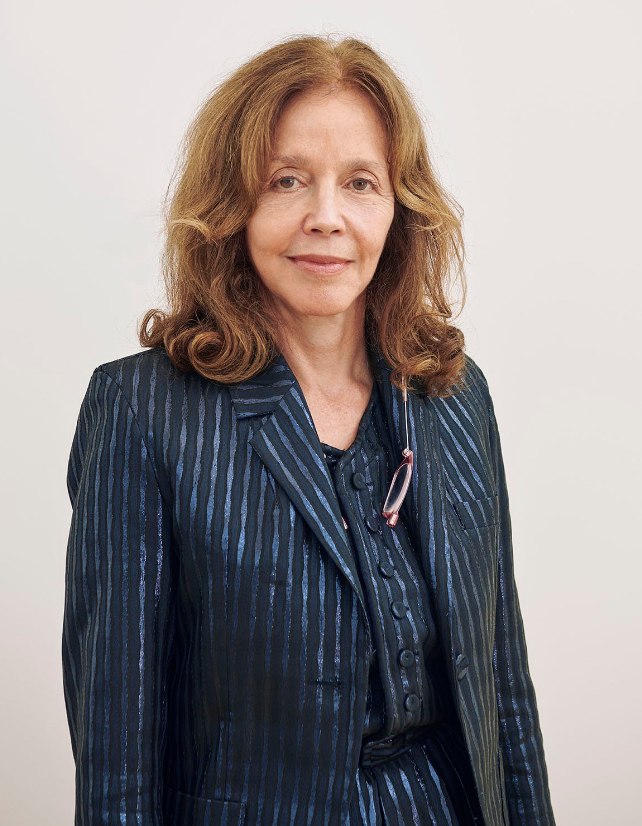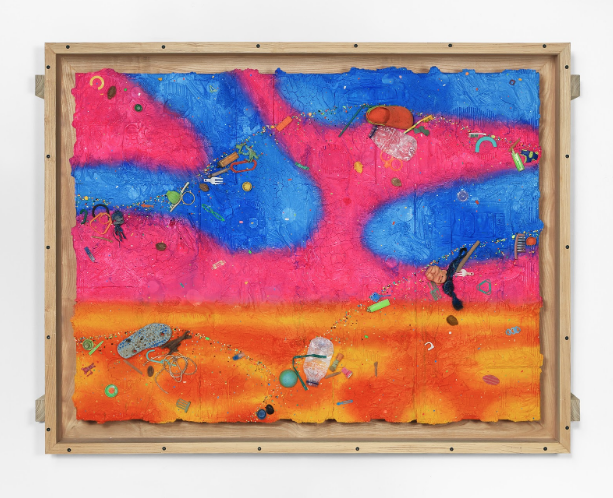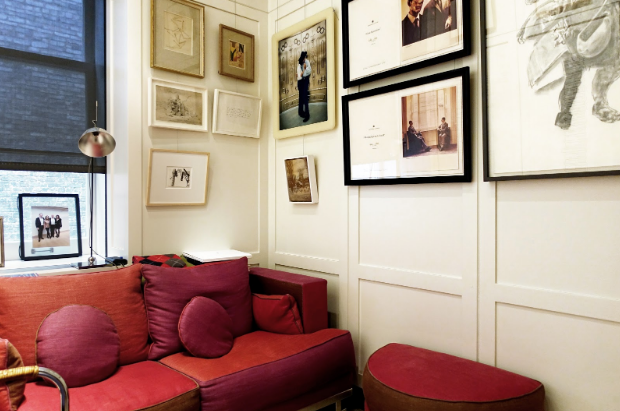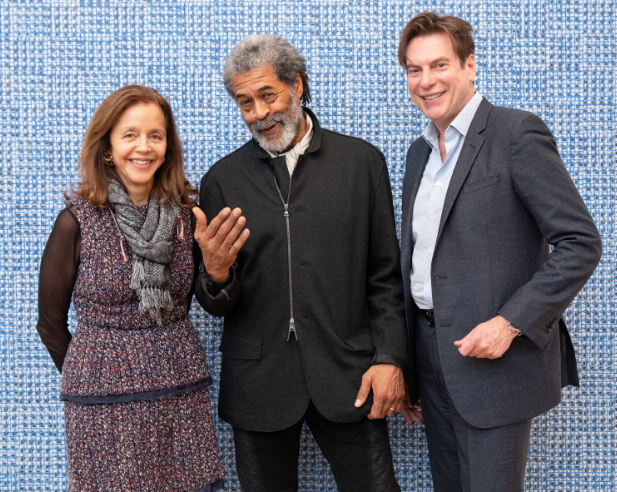People
The Art World at Home: Dealer Rachel Lehmann Is Showing Ashley Bickerton Works and Daydreaming About an Extra Day in the Week
We caught up with the New York art dealer ahead of the opening of her gallery's latest show.

We caught up with the New York art dealer ahead of the opening of her gallery's latest show.

Nearly 25 years ago, art dealers Rachel Lehmann and David Maupin founded their eponymous gallery in New York. Their goal was to focus on contemporary artists and estates from around the world, which they have expanded upon by opening galleries in Hong Kong, Seoul, and, most recently, London in 2020.
Recently, we caught up with gallery cofounder Rachel Lehmann to hear about how she’s been spending time at home, and what projects she’s been working on as of late.
What are you working on right now?
I’ve been thinking a lot about our program holistically, the lessons we’ve learned from the pandemic, and our goals for 2021. I’m always working on exhibitions and currently this means planning programming across New York, London, Hong Kong, Seoul, and Palm Beach, as well as our online viewing rooms.
Right now, I am focused on a presentation we’re developing with Ashley Bickerton of a new body of work, which he’s calling his “Flotsam” series. Ashley loves our planet and its force; he is calling attention to human consumption and industrial waste. Ashley is an artist I am fortunate to have worked with for decades. I remember the first time I saw his work at Sonnabend, it was 1986 I think. At the time I was living in Switzerland, and here was Ashley—an American artist in a post-Warhol period—who through his logo paintings was making us acutely aware of “mega-consumerism” and the world we live in, dominated by brand names. For me, I remember being confronted with all of the Swiss banking stereotypes.

Ashley Bickerton, Pink Cloud (2020). Courtesy the artist and Lehmann Maupin, New York, Hong Kong, Seoul, and London.
Walk us through the when, where, and how of your approach to this project on a regular day.
No two days are ever the same! I think it’s what I love most about the gallery. It keeps me energized.
Exhibition planning this past year has taken on an entirely different approach. We’ve had to install exhibitions via Zoom or FaceTime with artists overseas. Luckily, we have an incredible team at the gallery all around the world which has made it possible to divide and conquer.
While I miss traveling enormously, I still feel very connected to our artists, our clients, and our team. A typical day involves phone calls, WhatsApps, WeChat, and lots of Zooms. I wake up and start the day by making calls to Asia followed by Europe and the US. I tend to be very optimistic about the future, and I’ve enjoyed new ways of connecting when the physical isn’t possible.
What is bothering you right now?
First and foremost, I am concerned about the health and safety of so many—I think about my family, our artists, and our staff. The pandemic has shifted the way we communicate on a daily basis, but it has also given us the opportunity and the time to check in on each other.
When thinking about the art world, one of my biggest concerns right now is the future of institutions around the globe. They are essential to the health of the art world. I have spent a lot of time reflecting on the ways in which we, as a community, can support them. I try to remain optimistic, as we have proof as to how inspiring, enriching, necessary art is in general, and how healing art has been for the artists and for wider audiences.
What was the last thing that made you laugh out loud?
Just the other week, I accepted an invitation to attend a gathering with curators at the Guggenheim. I got all dressed up to go to the museum, excited that I had an outing and expecting to meet with the curatorial department and hear about their upcoming shows. I even ordered an Uber, only to find out that it was virtual drinks and a Zoom event.
I was hysterical and laughing to myself. I still had a wonderful time. But to me, drinks mean drinks!
Are there any movies, music, podcasts, publications, or works of art that have made a big impact on you recently? If so, why?
I have a deep love for poetry. For me, art and poetry go hand in hand. Like so many, I was moved by Amanda Gorman’s reading during the Inauguration. Her youth and fierceful spirit reminded me of Rita Dove’s poem “Rosa,” in which Rosa [Parks] sat quietly and bravely in the section of the bus reserved for White people. Amanda’s conviction in the future of Democracy in the US reminded me of Langston Hughes who knows in his poem “I, too” that he will be sitting tomorrow with everyone in the mainroom, although today he has been dismissed to the kitchen. But he is hopeful.
I recently revisited a podcast interview with Shirazeh Houshiary. The podcast is called “At a Distance.” Recorded at the height of the pandemic, Shirazeh discusses her appreciation of the natural world, the power of embracing uncertainty, and transcending the “duality of existence.” It made me think about the current state of the world and reminded me that it’s okay to slow down.
What is your favorite part of your house and why?
My favorite part of my house in New York is my home office. It is a little intimate room where I keep drawings and small works by some of the many artists that I love—including Marcel Duchamp, Matthew Barney, Carroll Dunham, and Peter Halley—but also a place where I keep memories of my family. In this room is where I love to read poetry and think about art.

Rachel Lehmann’s home office in New York. Courtesy Lehmann Maupin, New York, Hong Kong, Seoul, and London.
What’s your favorite work of art in the house and why?
It is so challenging to pick a single one! I have the pleasure of being surrounded by some of my favorite artists, including Sigmar Polke, Bruce Nauman, Ai Weiwei, and Shirazeh Houshiary, among others. I always find myself attracted to different works at different times.
For example, we currently have a presentation with Do Ho Suh at our gallery in London, so I’ve been spending a lot of time thinking about the work I have at home. A lot of Suh’s work is about the sense of being and belonging, and during this pandemic the meaning of “home” has taken new and different shapes for everyone.
Are there any causes you support that you would like to share?
One that is deserving of greater visibility is McArthur Binion’s Modern Ancient Brown Foundation. McArthur founded a residency program, based in Detroit, last year to support the intersection between the visual and literary arts. It is heavily influenced by McArthur’s personal experiences and supports the work of artists of color.
In 2021, I have pledged to support more green energy causes and find ways to improve our environmental footprint, both personally and at the gallery. There are already some groups in the art world that are calling attention to the industry’s waste and carbon footprint, and I want to ensure that Lehmann Maupin will play its part in helping to bring about change.

Rachel Lehmann ,McArthur Binion, and David Maupin at the opening dinner for Binion’s exhibition “Hand:Work” (2019). Courtesy the artists and Lehmann Maupin, New York, Hong Kong, Seoul, and London.
What is your guilty pleasure?
One of my guilty pleasures is imaginary. I like to build an extra day into my schedule. After a long day of traveling, I create this day in my mind. I imagine myself lying in bed, reading a book of poetry or certain articles that I’ve missed over the week, and enjoying a glass of my favorite wine, called Matassa. It’s biodynamic and made in France at a tiny vineyard—you can never buy enough. Another guilty pleasure: wine!
What’s going on in the kitchen these days? Any projects?
I used to have some abilities to cook back in the day. Unfortunately, those days are long gone and that ability is now catastrophic! The last time I was near a kitchen was Liza Lou’s installation at the Whitney. It’s a gorgeous and powerful work, and luckily for me, it’s not a real, functioning kitchen!
Which two fellow art-world people, living or dead, would you like to convene for dinner, and why?
I think one of my guests would need to be Marisa Merz, whose famous husband, Mario Merz, was a pioneer of the Arte Povera movement—but unfortunately she lived a quiet life in his shadow. Her paintings, sculptures, and installations were way ahead of her time. She was the only woman in the movement, and one of the few Italian women to exhibit in major venues internationally. I’ve long admired her.
Another person I would want to invite to my dinner is Liu Wei. He recently opened a major solo exhibition at the Long Museum in Shanghai. It’s been far too long since we’ve been able to have dinner together. We always have meaningful conversations.
Liu Wei speaks Chinese and Marisa hardly spoke English, only Italian. It would be a theatrical, enlightening meal where Liu Wei would go into a long philosophical explanation about the state of the world, and Marisa would probably speak about her relationship with Mario. But they would only communicate through body language. That would be the most complicated foreign language to learn! I would be there in the middle, trying to translate for these two, and learn a language that would bridge their two worlds.